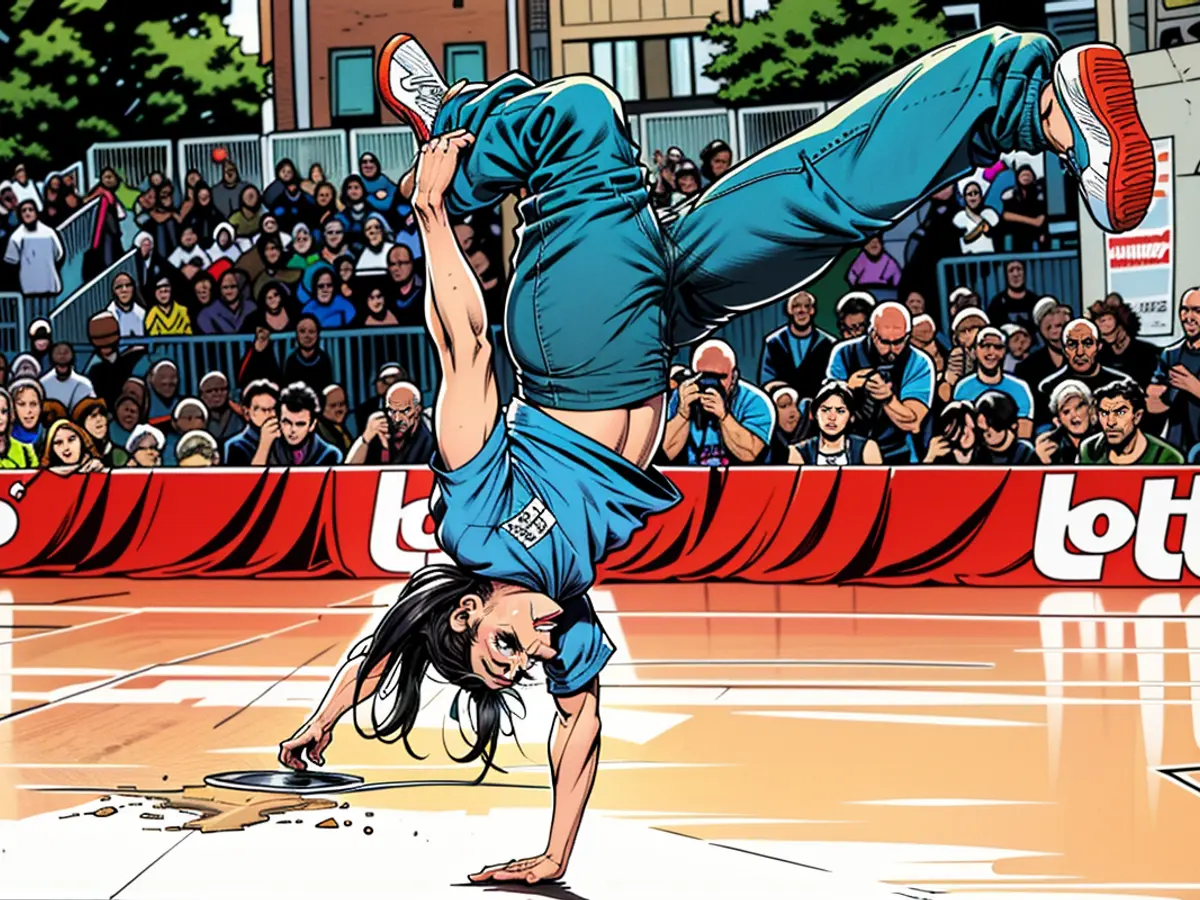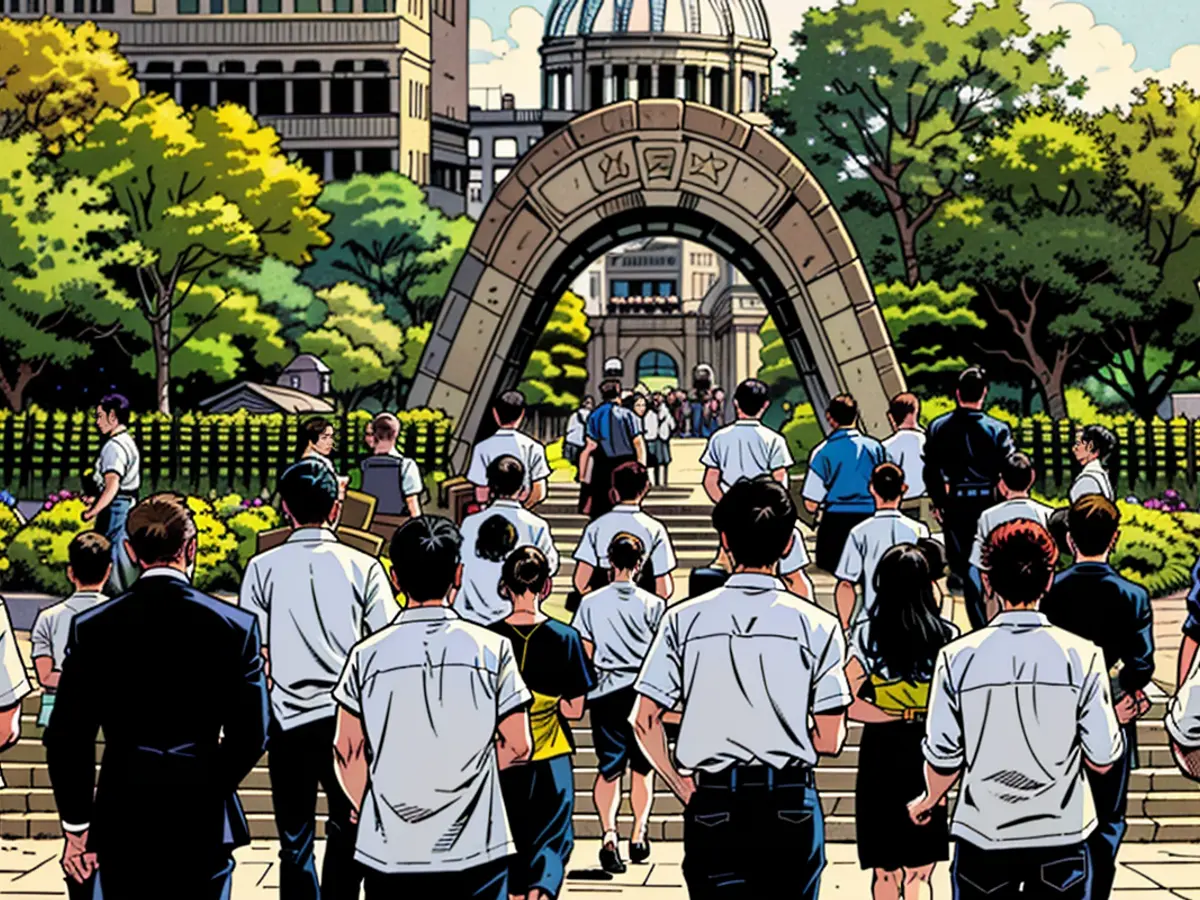This sport is making its Olympics debut in Paris. Just don’t call it breakdancing
It might seem more like an artform than a sport, but breakdancing — known professionally as breaking — is making its Olympics debut this month in Paris.
Breaking has been flourishing on the streets of New York and other US cities since the 1970s, but Paris marks its first time its athletes, known as B-boys and B-girls, will freestyle their moves on perhaps the world’s biggest stage.
The two-day breaking competition this Friday and Saturday features competitors from more than a dozen countries, including China, France, Japan, the Netherlands, South Korea, Ukraine, Kazakhstan and the United States.
The Games will expose breaking to a wider audience, said Victor Montalvo (nicknamed B-boy Victor) of the US, who’s been called the “Michael Jordan of breaking” and is a favorite in Paris to bring home a medal.
“It’s reaching a different audience, a global audience, an audience that thought breaking was dead or was never there, an audience that has the stereotypes or misconceptions of breaking back in the 1980s,” Montalvo told CNN En Espanol in a recent interview.
As the popular pastime steps into the Olympics spotlight, here’s everything you need to know.
Breaking has been a competitive form of street performance for decades
Breaking in the US is part of the hip-hop culture that emerged on the streets of New York City five decades ago. It started as a form of creative expression among Black and Latino youth and is considered one of the key elements of hip-hop, along with rapping, DJing and graffiti art.
“Breaking was a pivotal part of the hip-hop movement, combining dance, music and urban culture,” says Sergey Nifontov, secretary-general of the World DanceSport Federation, which governs the sport. “The dance style was heavily influenced by a mix of movements from various sources, including gymnastics, martial arts and even the complex footwork of James Brown.”
Driven by the growing popularity of hip-hop, breaking burst into the mainstream in the mid-‘80s thanks to media coverage and appearances in such movies as “Wild Style,” “Beat Street,” “Breakin’” and its famously titled sequel, “Breakin’ 2: Electric Boogaloo.”

The growth of the internet and social media later spread the artform further by connecting dancers worldwide to share movesand learn from one another, Nifontov says. Breaking also got exposure in recent years on reality TV shows such as “So You Think You Can Dance?”
The artform provided minority youth with a form of self-expression about their struggles and larger social issues, said Richard M. Cooper, an expert on hip-hop culture and co-coordinator of African American Studies at Widener University in Chester, Pennsylvania. He describes it as a creative outlet for a young urban generation desperate to rise above their circumstances.
“Breaking (was) created against all odds at a time when there was a lack of resources,” Cooper said. “It was a way to send a message that ‘we’re still here having a good time and we’re not going anywhere.’ It was a way for Black and Brown kids to have artistic expression ... (and) create this beautiful, complicated, stylized art form.”
Cooper said that although breaking was a cornerstone of the hip-hop movement, its roots can be traced decades earlier back to Africa, where dancers made similar moves to drums and other percussion instruments.
There’s a reason it’s called breaking and not breakdancing
While breakdancing is the more commonly known term, the original B-Boys and B-Girls coined the word “breaking” as tribute to the vigorous dance battles that happen during breaks in a track. The Olympics adopted the same name to honor its culture and history and preserve its authenticity, Nifontov said.
“While the term breakdancing became popular in mainstream media during the 1980s, largely due to Hollywood and commercial influences, it is often viewed as a term that oversimplifies and commercializes the artform,” Nifontov told CNN in an email. “The community prefers breaking as it encompasses the deeper cultural and artistic significance of the dance.”

The International Olympic Committee has been searching for ways to attract younger audiences. In recent years, it has added skateboarding, sport climbing and surfing to the Games as part of that effort.
Breaking fits this trend given its cultural relevance and dynamic nature, Nifontov said. Officials introduced breaking at the 2018 Summer Youth Olympic Games in Argentina, where its viewership hit 1 million, dwarfing the audience for other sports.
As breaking makes its Olympics debut, Cooper said a part of him fears it will lose some of the cultural qualities that make it a unique artform.
“Everything changes when corporate structures take over,” he said. But Cooper also says he’s happy that breaking is getting the recognition it deserves, and he’s excited to see athletes highlight its culture and creativity on a global stage.
Breaking events are scored on five factors
Like gymnastics or figure skating, breaking competitions are scored by a panel of judges. But unlike in those sports, which allow athletes to compete to the recorded music of their choice, B-Boys and B-Girls must showcase their art and athleticism to spontaneous beats from a DJ.
“The DJ sets the mood, and the dancers have to react to it,” said Zack Slusser, a vice president at USA Dance, the nation’s body of the World DanceSport Federation. “That is probably the most crucial thing when it comes to judging — how much a dancer can resonate their arsenal of moves with the music.”
Unlike some other sports, success in breaking is not about who’s the fastest or the strongest, Montalvo said.

“That does help. But it’s more about the character, originality and respecting the dance and bringing the essence,” he said in a profile on Team USA’s website.
In breaking, nine judges score athletes’ performances based on five factors:
Execution: Precision, control and cleanliness of moves
Musicality: Matching movements to the beats and rhythms
Originality: Creativity and innovation in moves
Technique: Skill level in performing complex movements, including footwork, power moves and freezes
Vocabulary: Variety and range of movements used throughout the performance
Each battle is scored per round, and the athlete who wins the majority of rounds is declared the winner, Nifontov said.
Cooper says the scoring system is a far cry from its origins in street battles, where winners and losers were determined by audience cheers.
“This is how it worked back in the day,” he said. “Those patterns of adulation and cheers decided the winner. It was communal. It was based on street credibility.”
In some communities, breaking also was a way of settling conflicts, he said.
“So many artistic, beautiful parts of it were also about relationships, where some have argued that it settled beefs. And instead of fighting, it’s let’s battle ... on the dance floor.”
The US team says it’s ready to make history
The breaking competition in Paris will feature 16 B-Boys and 16 B-Girls from all over the world.
The US team is led by Montalvo, who started breaking at age 9 because of his father, who was part of a breaking duo in Mexico. He describes breaking as intertwined with hip-hop in a fun way.

“It’s about the dance. And it’s not just breaking. It’s like hip-hop. It’s graffiti, DJing, breaking, and emceeing. So it’s like you put that together and it’s a group of people in a room just having fun and partying and living their best life,” he told Team USA.
The 30-year-old Florida resident was the first American to qualify for the Olympics and is the reigning world champion.
Montalvo’s moves appear to defy gravity, with upside-down headspins in which he balances on one arm and seamless transitions between fast-moving footwork and freezes. He’s been a force in the breaking scene for nearly a decade.
“He’s good at ... everything,” said Slusser of USA Dance. “His moves are technical, exciting and put together in an almost impossible-to-match flow.”
The other US breakers include Sunny Choi, nicknamed B-Girl Sunny; Logan Edra, 21, whose B-girl name is Logistx; and Jeffrey Louis, 29, or B-Boy Jeffro.
Louis says a key challenge for the Olympic judges will be assigning a grade to a sport that’s also an artform.
“Even though we try to make breaking objective, it’s still subjective,” Louis told Team USA. “You’re judging art that’s transformed into sport. Sometimes I don’t even know why one guy lost. I’ll be like how?”
Choi, 35, is a former gymnast who started breaking as a freshman at the University of Pennsylvania and loved its artistic elements and physical challenges. She eventually left her job at a global cosmetics company to focus on breaking and lives in New York City, where she trains.
“My whole entire life, I’ve been doing what I should be doing as dictated by ... other people, society, culture — and I decided to quit because this (breaking) is a childhood dream,” she said.
“In terms of the Olympics, so many of us, even the breakers, were like, ‘There’s no way that’s going to happen because it’s still such an underground street culture,’” she said. “I could never have pictured this.”
CNN’s Gonzalo Alvarado contributed to this story.
Breaking, which is widely known as breakdancing, has been an integral part of the hip-hop culture that originated in New York City five decades ago. The dance form, considered one of the key elements of hip-hop, gained mainstream popularity in the 1980s and was heavily influenced by gymnastics, martial arts, and James Brown's complex footwork.
Breaking competitions are scored based on five factors: execution, musicality, originality, technique, and vocabulary. The DJ sets the mood for the dancers, who must react to the beats and rhythms, and success is not solely based on speed or strength, but also on character, originality, and respect for the dance.








